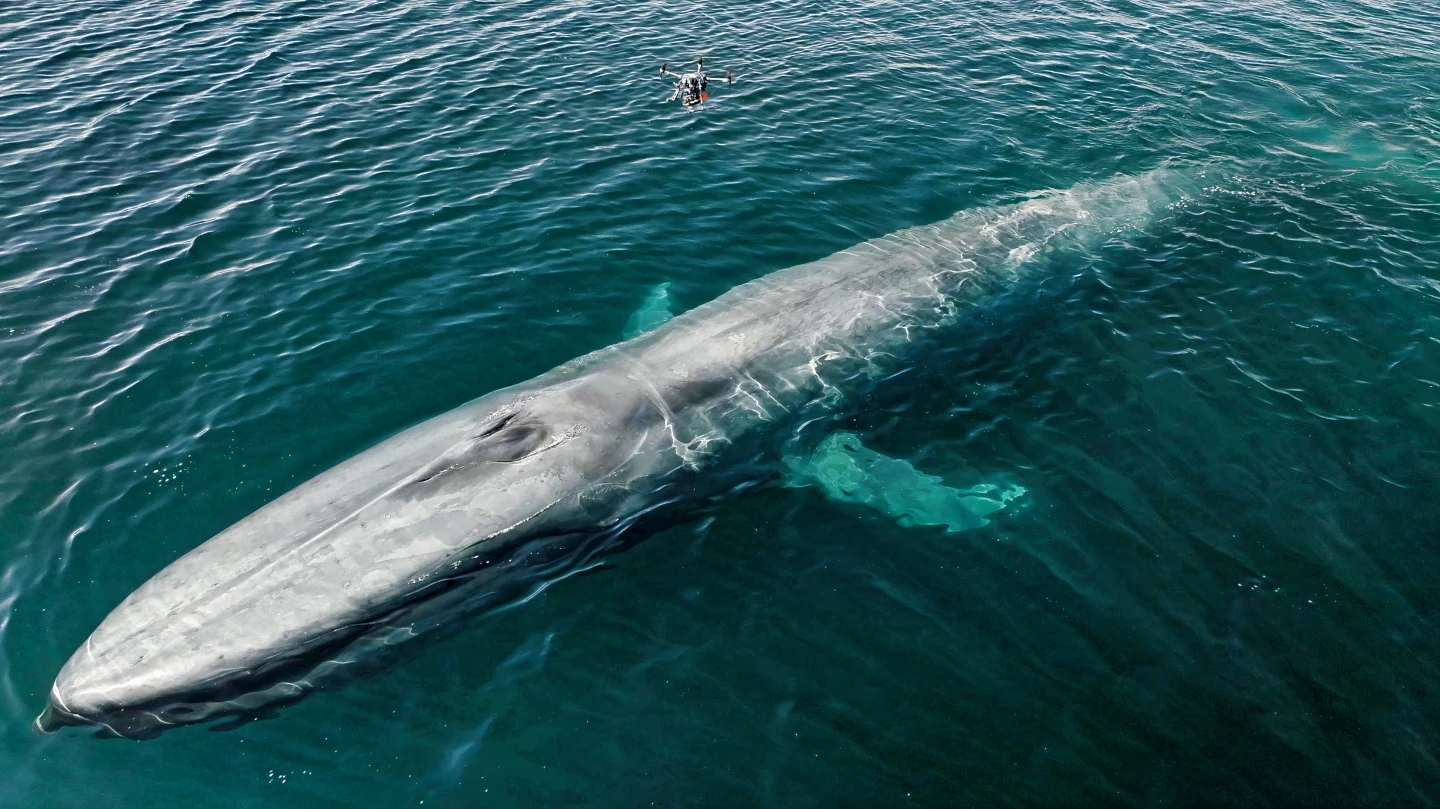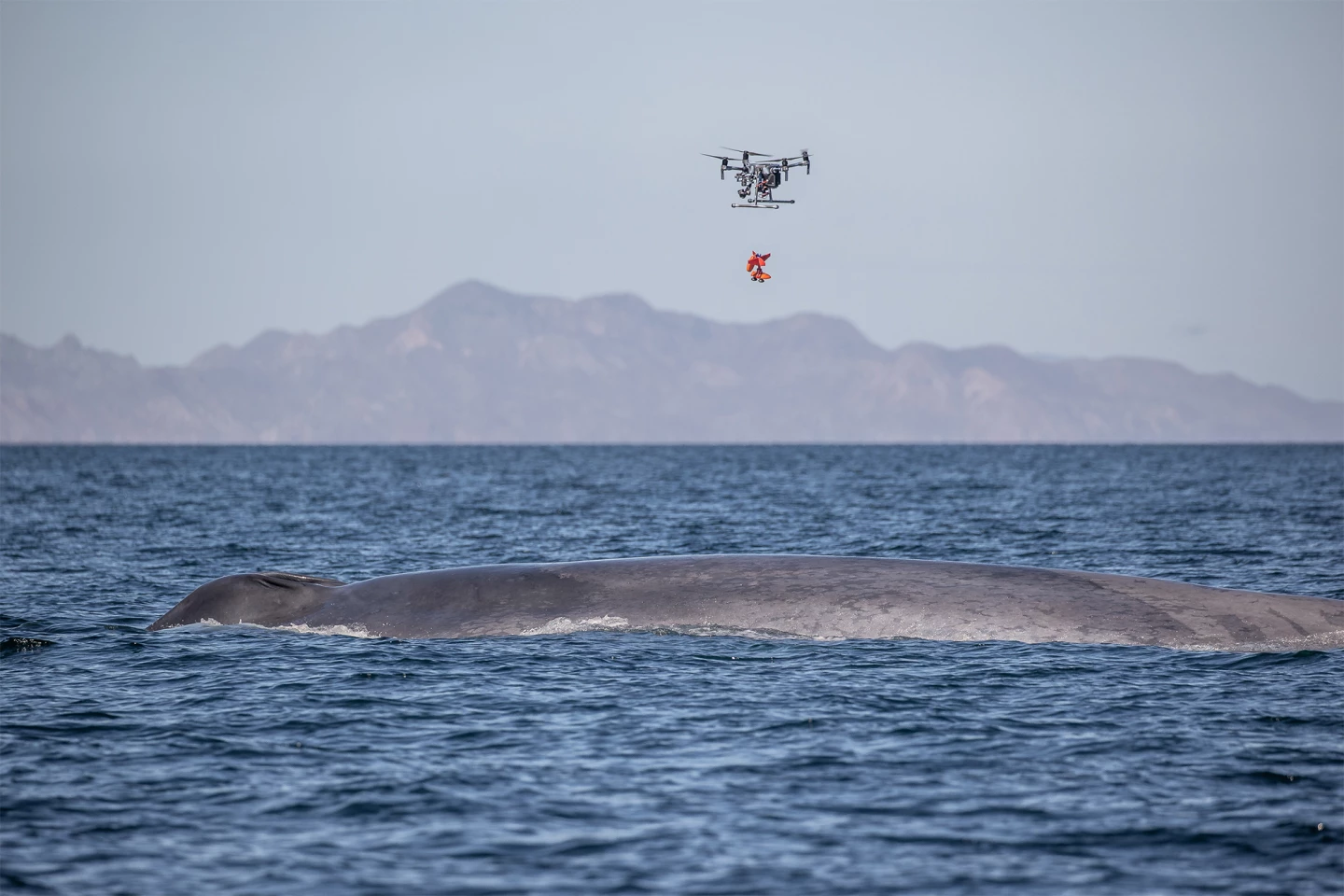They’re some of the world’s largest mammals, but whales are notoriously difficult for scientists to gather good intel on. While surface populations can be counted and watched, observational research is limited given the animals spend around 95% of their time below the surface, in often remote and inhospitable waters.
Tagging animals with data-gathering devices has been the best way to get to know some of the world’s most elusive mammals, but traditional methods can be dangerous for researchers, stressful for the animals and incredibly time-consuming.
Now, scientists have undertaken the most comprehensive study into the effectiveness of drone technology in gathering vital data from fin and blue whales, which does away with the need to approach these massive, often vulnerable, species in a research vessel.
Undertaking eight days of field testing in the waters around Loreto Bay National Park, Mexico, the international team of researchers deployed uncrewed aerial vehicles (UAVs), as part of a piloted uncrewed aerial system (UAS), to deploy and drop tags on animals. From 29 opportunities when an animal was deemed optimal for tagging, the drone was successful in 21 attempts.
What’s more, UAV launch to tag deployment took an average of 2 minutes 45 seconds, and the research vessel was able to keep a distance of around 1600 feet (500 meters) from the target. At a 72% success rate, the study shows that it could be the most efficient method of gathering this kind of data so far developed.

The study included other advantages, including the drones’ ability to match the swimming speed of an animal, meaning tag attachment can succeed where traditional manual pole tagging can’t.
“Our results support the use of UAS as a platform for tagging free-swimming large whales,” the researchers noted. “The UAS was able to successfully attach tags on specified individuals and do so from large initial distances in a short period of time. This potentially increases tagging efficiency, while reducing possible disturbance related to the close approach and required proximity typically needed to attach tags using small vessels. The technique also reduces the possibility of whales or people being struck and injured.”

Biologging involves adhering suction cups with internal data tags, essentially small mini-computers, to the back of whales for around 24 hours, which inform scientists of underwater animal behavior humans are rarely privy to. The tags can record depth, speed, acceleration, deceleration, how water temperature impacts behavior and other aspects of whale life that is vital for understanding these mammals.
Traditionally, the tags have have been attached to the whales by a long pole measuring between 20-30 ft (6-9 m) operated by a team of researchers on a boat that’s been able to get close enough to the animals. This is not only a challenging exercise but a dangerous one for scientists and often a stressful one for the whales.
Blue whales (Balaenoptera musculus), the biggest animals on the planet, occupy all oceans except the Arctic but remain listed as endangered on the IUCN Red List of Threatened Species. Similarly, the fin whale (B. physalus) is found throughout the world’s oceans and has only recently moved from endangered to vulnerable as conservation efforts have seen improved numbers.
Data tagging plays a critical role in informing conservation and protection programs. The advantages of noninvasive measures of research, for scientists and for the animals, has been the focus of earlier drone experiments, such as with the microbe-gathering SnotBot.
“UAS-based tagging has the potential to significantly enhance the study of cetaceans in the wild,” noted the researchers. “Our promising initial results demonstrate, to the best of our knowledge, the first substantive investigation into the use of UAS for attaching broadly used biologging tags (DTAGs and CATS) to free-swimming baleen whales (blue and fin).
“Further developments could lead to UAS-based tagging methods becoming a viable method for vulnerable or hard to study species. However, it is important to emphasize the skill required of the UAS pilot, including extensive pre-flight training specific to tagging whales.”
The study was published in the journal Royal Society Open Science and you can see the drone's-eye view and tagging in action in this video below.








